Why would someone wash clothes or bathe in their own drinking water source?
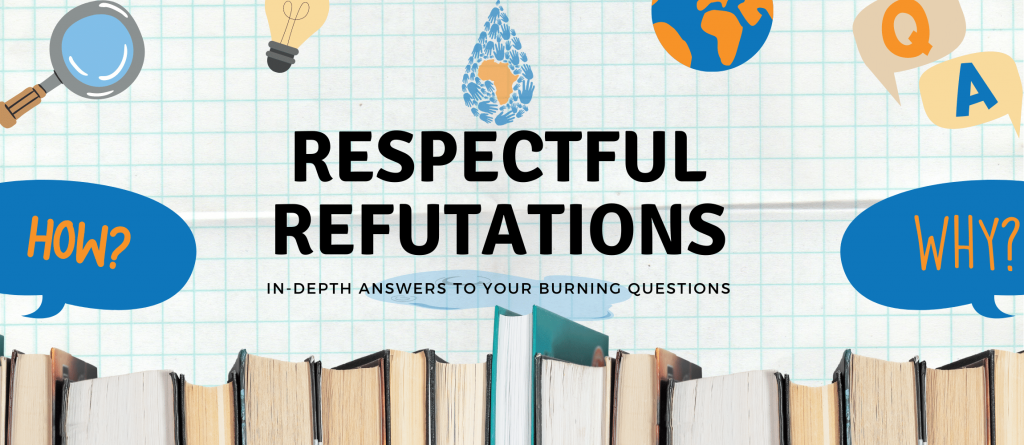
This is another entry in a series where we answer questions we’ve received from curious donors, website visitors, and casual commenters.
As we’ve said before, it can be difficult for those who have always had water piped into their homes to understand what it’s like not to have water. We haven’t needed to trek long distances, brave harsh wilderness, wait in long lines, or dig scoop holes into dry riverbeds to obtain often-contaminated water. These human experiences are at the core of what we aim to alleviate, but the water crisis is massive, nuanced, and ever-changing.
Our staff in the United States and overseas in our target areas live and breathe water, sanitation, and hygiene—yet we still learn new things daily. This series aims to share what we’ve learned with anyone skeptical, curious, or (our favorite) thirsty for knowledge.
For someone whose household water is clean straight from the faucet, it might sound foolhardy to launder clothes in a water source. But many people in sub-Saharan Africa can’t avoid it. Studies have shown that in some areas of sub-Saharan Africa, as many as 30% of households without piped water wash their clothes in an unprotected water source, with the practice being more prevalent in rural communities.
To ask why they would do so assumes that they have a choice in the matter.
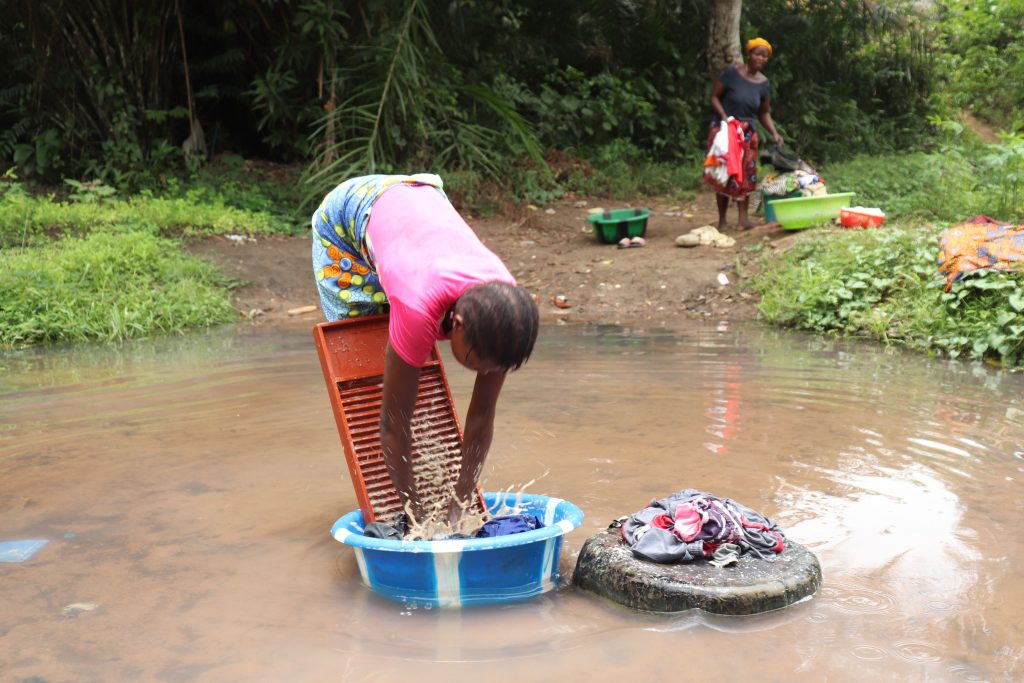
For those without a reliable, clean water source, it’s difficult to access education for so many reasons: kids need to help on the family farm, daughters get married early, students must leave class to supply water to their schools, children can’t clean their uniforms often enough and get punished and sent home for wearing dirty uniforms to school.
Even if a school offers health and hygiene classes, kids may miss them. Some people washing clothes in a water source may not even know they’re contaminating the water. This is why we offer hygiene training alongside every water project.
But even for those who do know, unless there’s an alternative water source for them to use, there’s not much they can do about it.
In fact, in some cases, community leadership may have mandated laundering clothes at a specific water source. When the well in Conteya, Sierra Leone dried up, headman Nabie Kamara’s only course of action was to preserve what little water was left in the well for drinking by asking community members to bathe and do laundry at the local swamp.
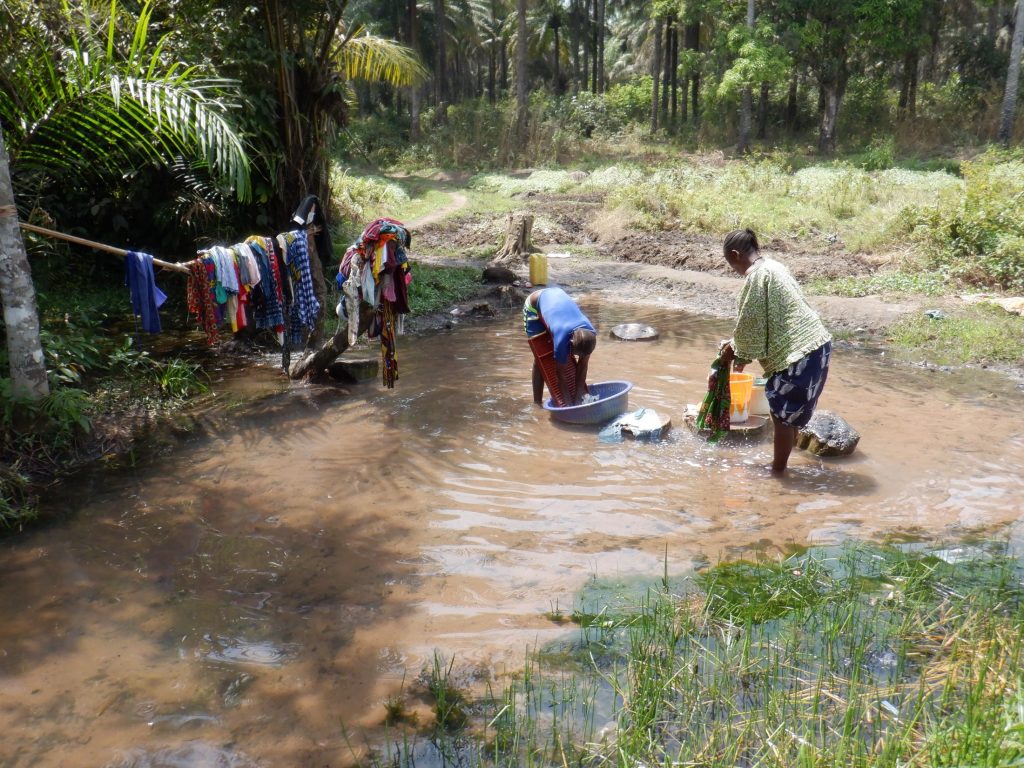
“As a family head, I have reduced [the] wastage of water by making sure laundry and bathing is done at the water source,” Nabie said.
“We are always going to be in need of clean water, and the more the population increases, the more our use of water is also going to increase.”
When the well finally dried up, their only remaining water source was contaminated — until we rehabilitated their well in 2021.
The advantage of doing laundry in an open water source is not having to carry several containers of water home. Otherwise, washing clothes and bedding while standing in an open pool of water is not exactly desirable.
Here are perspectives from people in Sierra Leone where The Water Project has partnered with communities to install safe water points.
“If the water well is working all year, I will not have to go down to the swamp, but since it is not working, I have to do laundry down there,” said 14-year-old Memunatu K. from Benkia Community.
“The hardest part is carrying the heavy and soaked container of clothes climbing the hill. [My brothers] could at least wait to help me carry the load, but no, I have to also do it for them. After all, it is mostly their clothes.”
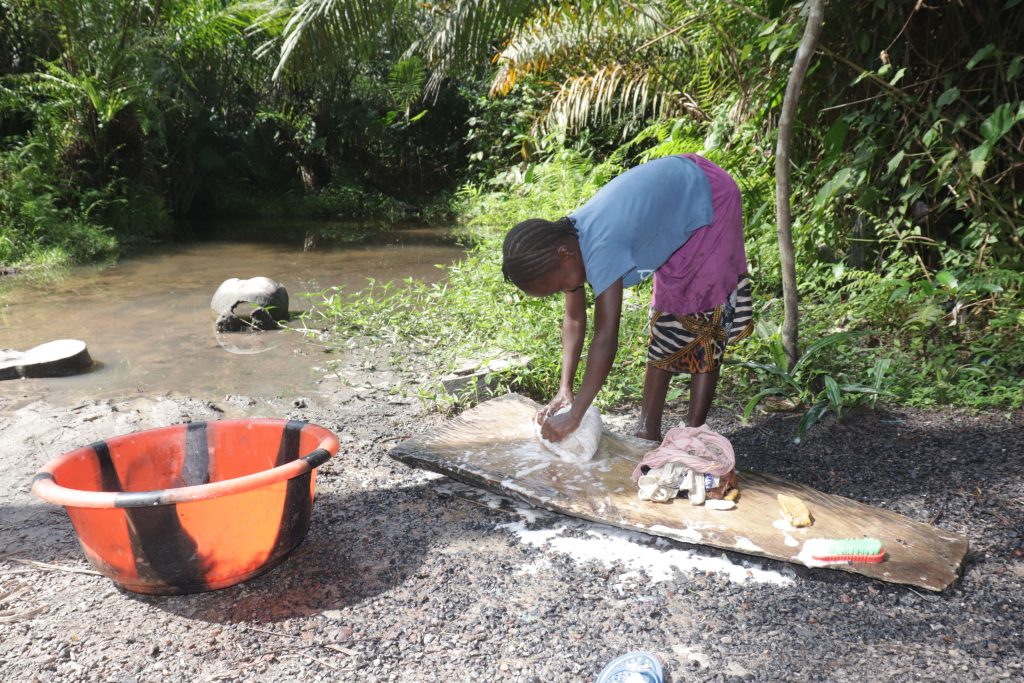
“I would always prefer fetching water at the main water source than the swamp,” said Fatmata S. from Menika Community.
“It is hard to fetch water at the swamp because of the distance, and it is a bushy area where snakes could be easily seen. I cannot go to the swamp well alone to fetch water. I [have] to wait until I see people going the same way, then I join them to fetch water. I have to bathe and launder my clothes at the swamp because the main water source is not available. It is so hard to fetch water from the swamp to launder clothes.”
“I fetch water at the main pump, but [there] will come a time [when] the well gets dry or low,” said Fatmata B., 16, of Sakaya Community.
“At that moment, there will be more people waiting to fetch the little water the pump provides. There are certain activities I could not do at the house, but I would prefer doing them at the swamp water source, like laundering and bathing my younger siblings, because it would cause me more challenges to get enough water at the house to do so. The swamp water source is not safe because the area is bushy, and because of that, there are snakes around the place. It is easy for them to bite people. I fear sometimes and [am] very attentive anytime I am at the swamp.”
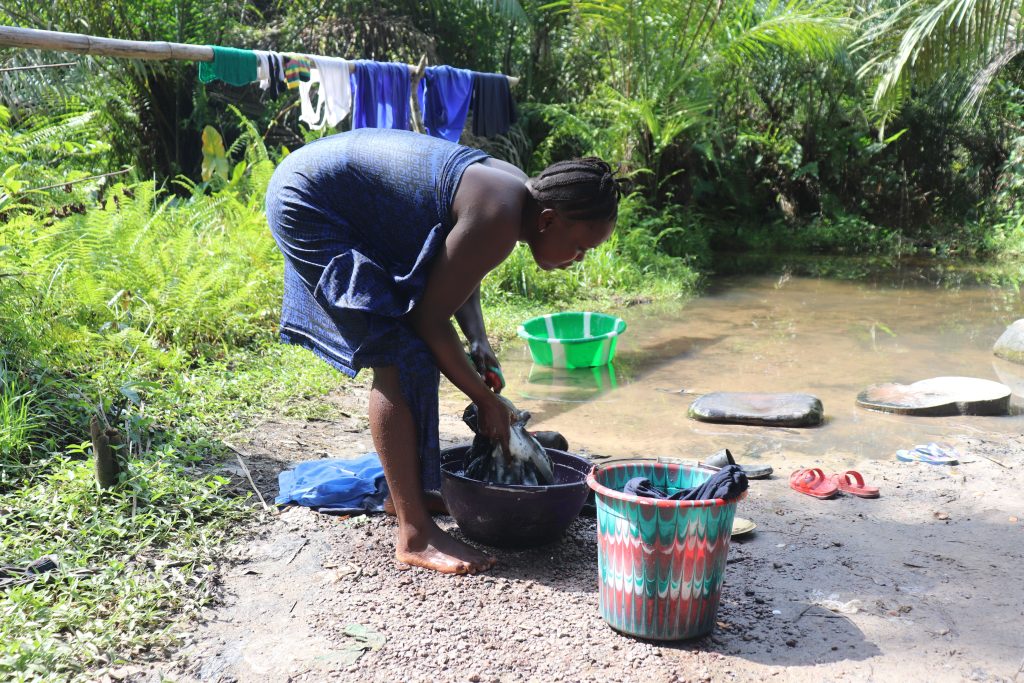
The good news? Given enough water sources, people will gladly wash their clothes at home, far away from any water sources. Community members told us:
“Today, I have learned that we should not do any laundering closer to our drinking sources because we will end up drinking the water,” said 53-year-old Swaibu Bangura from Benkia Community after attending a hygiene and sanitation training in his community.
“That very soap water will be drained into the pump. I have also learned that we get sicknesses like typhoid, diarrhea, worms, or even skin infection as a result of contaminated foods and water. I strongly believe that if we all try to follow this advice, we will live better lives in this community.”
“Before, I used to collect water from a far source, but now it is easy to collect water from this water point to cook, launder, bathe, and drink,” said 41-year-old Fatmata Conteh from Masoila Community. “This water point has made it very easy for me to get that done on time. I and my family will now practice better hygiene behavior than before.”
“It is easy to fetch water from this new water well to cook early and bathe before late at night,” said 17-year-old Salaimatu B. from Kalangba Junction Community.
“I also [will no longer] be burdened to wait on other people to go to the stream to launder my clothes. I can fetch water from this new well to the house and do my laundering easily. There is no need to [be scared] of harm when fetching water at this new well as we used to [be]. The location of this new well is safe and free from attack by wild animals. This new well has given me more time for [fetching] water and [reading] my books at home, and now that I have enough time to read, I will try my best to perform well in school.”
“We were only depending on the surface water dug hole at the swamp area to fetch water as our main source,” said Angelina Sesay, 38, from Masoila Community.
“This water was not pure to drink and cook [with] because it is open to contamination, not fenced, and animals do have access to it. Also, the majority of women and children launder clothes closer to the area. It was very frustrating for us. Now that our community water point has been rehabilitated, we can do all our domestic work on time. We will make sure that the water point is always kept clean and protect it from harmful practices like bathing and laundering.”
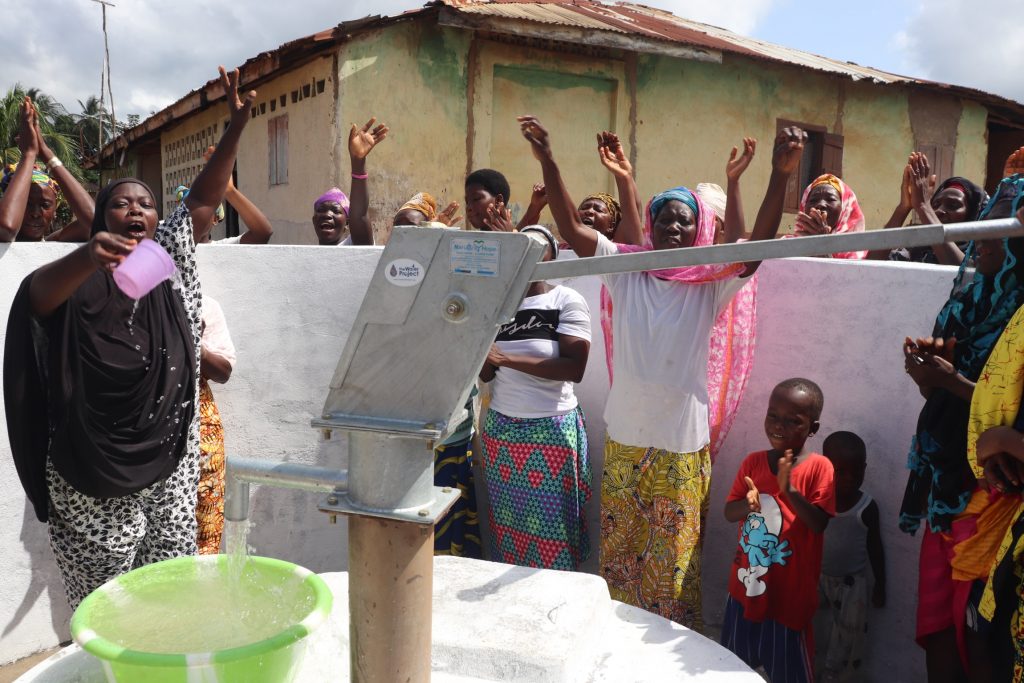
It’s easy for those of us who’ve had access to clean water our whole lives to misunderstand the circumstances of those who live without it. We always welcome your questions and the opportunities they bring to amplify the voices of those who don’t usually have a worldwide audience.
If this article leaves you wondering what to do, consider donating to our upcoming projects. We’re working to provide everyone in our service areas with enough water sources so that finding a water source to keep clean will no longer be an everyday struggle, and you can help!
Home More Like ThisTweet